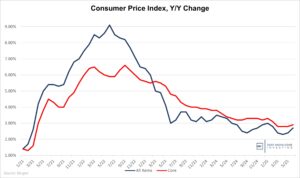Preparing for Recession/Stagflation:
In November, we prepared subscribers for coming inflation and noted that the current CPI number was not accurate. We wrote: “Those huge increases in energy, housing, and food prices indicate that the relatively benign CPI number is underestimating the issue.” In February, we openly said that the recent GDP number of 6.9 percent was so overstated that we thought actual GDP was negative. With our estimate of real inflation closer to 15% than the 7.5% everyone was seeing at the time, and our belief that GDP had turned negative, we wrote about stagflation in early February. In mid-February, James Davolos of Horizon Kinetics and I both thought the U.S. was heading for or had already entered stagflation territory.
Goldman Sachs is Late:
Last week, Goldman Sachs reduced its GDP forecast and started admitting that recession was a real possibility. On the front page of this website, we note that “we have come to understand that traditional sell-side research is not designed to make the investor money. It is designed to market investment banking services to the companies they cover.” The entire sell-side has been late on inflation, on recognizing that inflation wasn’t “transitory”, that the Federal Reserve was going to need to raise interest rates sooner than they expected, and understanding that GDP is so over-stated that we may already be in a recession/stagflation.
Other Independent Research With Us:
Last week, we were also pleased to see Dr. Edward Yardeni start to talk about the possibility of stagflation (here and here) and to see John Mauldin write about the possibility that a recession has already started. We respect both Dr. Yardeni and Mr. Mauldin and read their work regularly. We’re glad to see they’ve joined us in our concern about the direction of the U.S. economy.
Here’s What we Saw That Helped us Make the Call Early:
1) Over 80% of all U.S. dollars in existence have been created in the past two years. Government policy involved pouring huge amounts of liquidity into the economy while simultaneously shutting down businesses and discouraging work and production. More currency combined with fewer goods and services was always going to sow the seeds of high inflation.
2) One-third of the Consumer Price Index (CPI) is housing (referred to as “shelter”) and the the official CPI was showing housing price increases around 4 1/2 percent. A look at the Case-Shiller U.S. National Home Price Index, or Zillow, or your local real estate market proved that to be complete nonsense. We were early in understanding the many adjustments that have been made to the CPI since we had huge inflation numbers in the late 1970s/early 1980s are designed to make the politicians in power look good rather than to reflect economic reality. (This sleight of hand is practiced by both parties in the U.S.) We’ve also written on our view that food price inflation (another large part of the CPI calculation) is also understated.
3) GDP is also overstated. Smart observers pointed out that if you adjusted last month’s announcement of 6.9% GDP growth for inventory restocking, you got to a number around 2%. Further, GDP isn’t adjusted for inflation so check the above paragraph, and it’s pretty obvious that actual economic activity has gone negative.
4) The U.S. Federal Reserve and then government officials keep talking about inflation being “transitory” and how things will get better later this year. While that could potentially turn out to be true, we’re on record four months ago as saying that “no one could possibly know that“. Wishful thinking is not a substitute for a sold economic plan.
Are Your Current Sources of Information Predictive?:
We’ve been preparing subscribers for inflation, higher rates, and recession/stagflation for months. The sell-side is great at telling you what already happened. We’re focused on what’s going to happen next. If you want to be better prepared, please consider subscribing.



